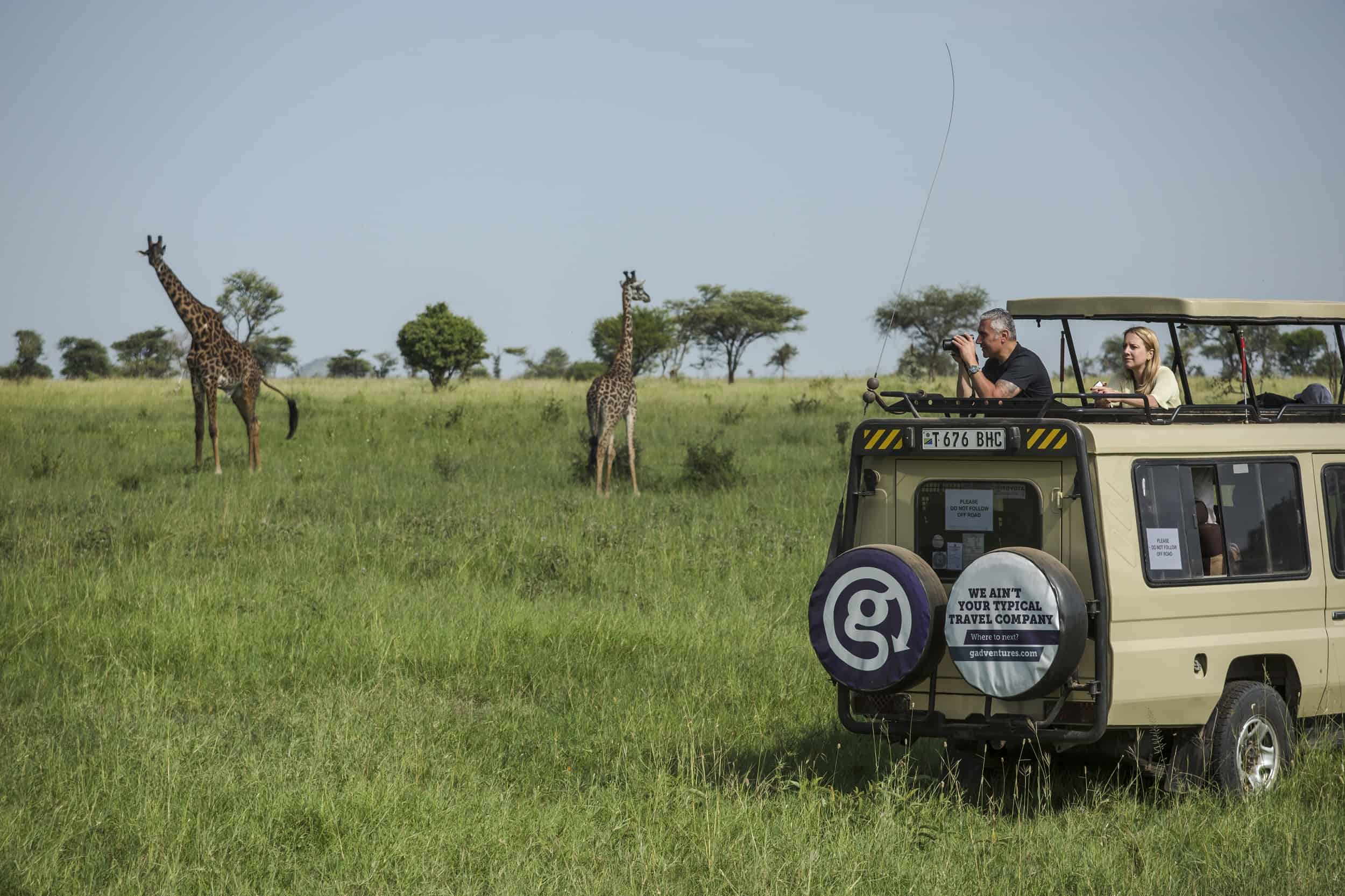
Around the world, animals are abused and exploited to entertain tourists. Elephants are trained to paint, tigers are drugged to snap selfies with and bears are chained, tortured and forced to dance. Most globetrotters don’t aspire to injure the animals they interact with while travelling. Unfortunately, not every business is transparent or ethical when dealing with animals. According to World Animal Protection, over 500,000 animals are trapped, ill-treated and made to perform at tourist entertainment venues every year.
From booking with travel companies that support animal welfare to pledging to do your part as an animal-friendly tourist, you can choose to avoid cruel attractions in favour of alternative activities.
Instead of taking a picture with a lion cub...
View all of Africa's Big 5 (and more) in their natural environment
World Animal Protection reports that lion cubs, often less than a month old, are taken from their mothers so tourists can pet and hold them for a photo-op. Grown lions are sometimes slaughtered; others are retrained for “walk with lions” experiences or sent to zoos.
However, in southern Africa, rangers in enclosed areas track lions, elephants, rhinos, zebras, giraffes and more at game reserves. At first, I was conflicted about fenced-in game reserves and collared lions. My friend from Johannesburg, South Africa told me that the country has a massive problem with poaching, and most of the wildlife would be killed without the protection of the reserve. During our four-day stay at Dinokeng, we ventured on several game drives, but couldn’t find elephants. I was disappointed but also impressed that the area was expansive enough to hide a herd of elephants. Whether lions, elephants or cetaceans, try to see animals in their natural habitat while travelling.
Instead of swimming in a pool with dolphins...
Take to the sea with whale sharks
 Photo by Darcy Wheeler on Unsplash
Photo by Darcy Wheeler on Unsplash
While on vacation, it might be tempting to swim with dolphins at your hotel or at an aquarium, but dolphins living in captivity can face heart-wrenching conditions. These highly social animals are often placed in unfamiliar groupings with limited space. Dolphin performances have been banned in some countries but still flourish in others. Many bottlenose dolphins die immediately after capture from the wild or during transport to entertainment facilities.
If you want to experience marine life on holiday, head to Mexico’s Baja California Sur. Not only will you have the chance to encounter wild dolphins in the Sea of Cortez, but you can swim alongside whale sharks. In La Paz, extensive government regulations mean that a limited number of licenses are issued. Permitted boats are outfitted with a GPS to track how many operators are in the designated whale shark zone at a given time and to enforce a 7.2-knot speed limit.
Canadian Traveller editor Jennifer Hubbert reported, “I only wanted to [swim alongside whale sharks] if I knew it was going to be done in a responsible way. I was really impressed by the people involved and their love of the wildlife and respect of its management. I learned that an unintended outcome of the program is that the area is attracting greater numbers of whale sharks each year because it has become a protected marine environment.”
Instead of riding an elephant...
Visit a sanctuary
 Photo by AJ Robbie on Unsplash
Photo by AJ Robbie on Unsplash
Feeding, riding and bathing elephants are controversial activities. Young elephants are often traumatically “broken” and forced to interact with a rotating line of tourists all day, every day. When not giving rides or performing, they are often chained with less than three metres to roam. World Animal Protection’s “Taken For A Ride” study found that captive elephants are still primarily captured from the wild. It also uncovered harsh training techniques including the use of bullhooks to manipulate the animals into submission.
Travel operators like G Adventures have enforced animal welfare policies that focus on appreciating animals from afar. Many countries have rehabilitation centres for injured and rescued animals; sometimes, they accept foreign visitors and volunteers. Unfortunately, not all of them are legitimate. National Geographic published an exposé revealing a well-known “sanctuary” in Thailand was a complete fraud. The owners transported the same elephants between riding camps and a fake sanctuary to meet growing demand. Wildlife rescues and reputable sanctuaries tend to allow animals to act the way they would in the wild, while spectators watch from a distance. If you’re going to volunteer, be willing to clean up dung, chop food and help with unglamorous chores.
The Bottom Line
You're allowed to decide that none of these options are ethical and refuse to participate in them. The important thing is to think about it. Do your research – a simple Google search with the name of the company and the word “ethical” may be enough. Be inquisitive and walk away if anything feels uncomfortable. If in doubt, turn to reputable animal welfare agencies for their insight and guidance.
When navigating the complicated world of ethical animal tourism, be wary of:
- Wild animals being touched, hand-fed or ridden
- Any species displaying physical symptoms of harm
- Animals being baited or abused to perform
- Any activity in which the main purpose is for animals to entertain tourists






